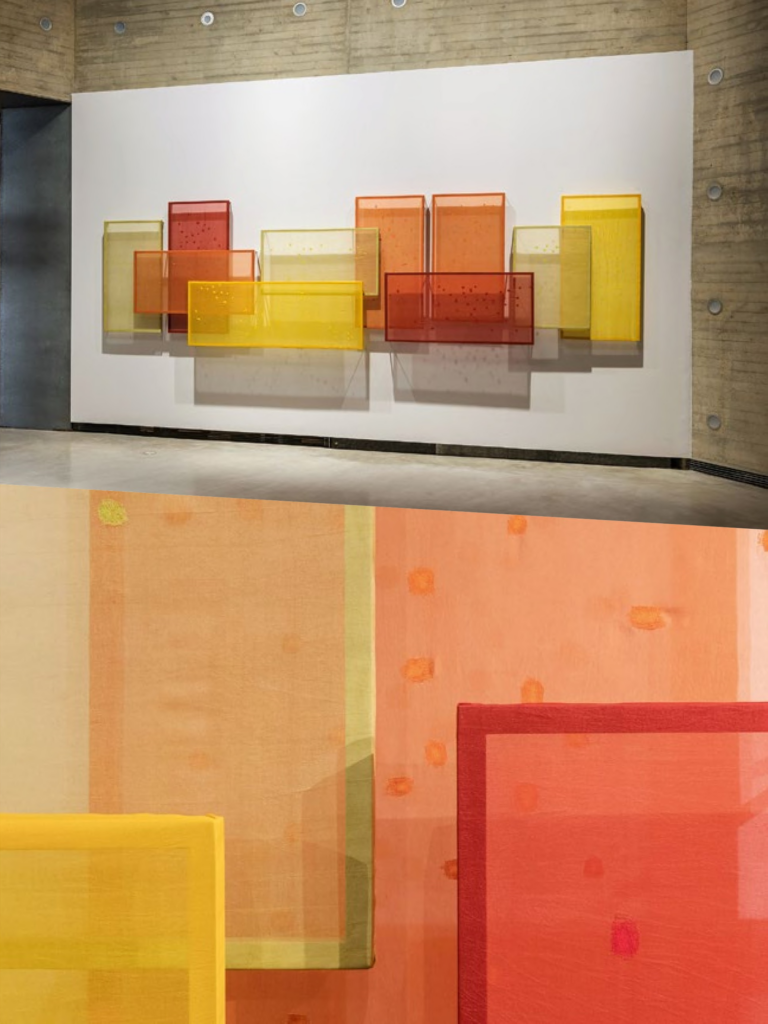DANA AWARTANI
She was born in 1987 in Jeddah, Saudi Arabia, where she lives and works
Come, Let me Heal your Wounds (2020), Listen to my words (2020)

Dana Awartani is a Saudi-Palestinian artist who draws on the heritage of Islamic art and languages of abstraction to create works of philosophical depth. From drawings of sacred geometric patterns to textile works and multimedia installations, her works are expressions of reverence for the history of Arab culture, process, and craft. She often collaborates with artisans to carry forward traditional art forms, underscoring the importance of continuity with the past, while bringing these practices into contemporary discourse. Studying in London, she received a BFA (2009) from Central Saint Martins and an MA (2011) from The Prince’s Foundation School of Traditional Arts. She is currently pursuing an Ijazah certificate in Islamic illumination.
Come, Let Me Heal Your Wounds (2020) derives from research into Ayur- vedic dyeing used to create clothing with healing properties. Awartani worked with dyeing workshops in Kerala to color pieces of silk in earthy hues—ochres, reds, and greens. The fabric was spanned on wooden frames and mounted on the wall as overlapping, semitransparent panels. The artist identified 355 sites of cultural loss caused by conflicts and acts of destruction since 2010, locating places where architectural heritage has been annihilated in Syria, Tunisia, Libya, Iraq, Egypt, and Yemen. Marking each location with a tear or hole, she created her own intuitive map on ten pieces of silk. Working together with local craftspeople, Awartani then repaired the pieces of fabric, darning each hole by hand. With its lightness and ephemeral quality, Awartani’s work hints at the fragility of existing sites, while serving as a plea to safeguard ancient monuments and maintain our threads to the past.
In her animated film Listen to my words (2020), the gray screen gradually fills with a delicate geometric pattern. The artist draws from the ornamental motifs of jali and mashrabiya, latticed screens used in Islamic architecture to regulate light, airflow, and heat. Jali have also traditionally shielded women from the male gaze, confining them to the home. Awartani was inspired by Nur Jahan (1577–1645), the wife of a Mughal emperor and a woman who played a leading role in government from behind a jali screen. Accompanying the drawings, voices of modern-day Saudi women recite verses by Arab poetesses dating from the pre-Islamic era to the twelfth century, expressions of yearning and pride across time.


